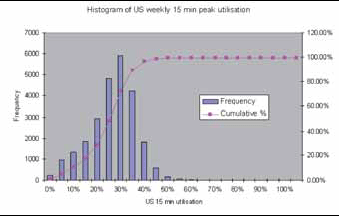
 |
In this month’s Expert Witness Adrian Sunderland, CTO Griffin Internet looks at the changing ways in which IPStream is addressing the user experience factor.
Knowing the underlying performance of a broadband line is vital to setting the expectations of your customers, determining your own proposition to the market and comparing value for money.
You may remember back in June 2007 I told you that BT Wholesale had revised the way that it described the end-user experience on IPStream products. Out went ‘contention ratios’ to be replaced by ‘minimum throughput expectation’. Now, just when you thought you had got your head around it they have changed the rules again.
In this month’s Expert Witness I revisit some of these issues and highlight some of the benefits and drawbacks of BT’s new policy.
The only thing BT guarantee with IPStream is a contention ratio of 50:1 or 20:1
MYTH – When IPStream was first launched it was available in two versions. IPStream Home had a quoted contention ratio of 50:1 and IPStream Office had a quoted contention ratio of 20:1. However, BT stopped using contention ratios to describe IPStream in October 2005 (BTW BRIEFING 024/05, 06.10.05) and started using a description of ‘Expected End-User Experience’ instead. For 2Mbit/s IPStream Home the minimum throughput expectation was published as being 400Kbit/s and 800Kbit/s for 2Mbit/s IPStream Office. If you expressed this as a contention ratio instead of throughput then you would be looking at 5:1 and 2.5:1, a big improvement over the original product specs.
The ‘BT Expected End- User Experience’ doesn’t make any difference if my ISP doesn’t guarantee it.
FACT – The actual performance that your endusers experience is dependent on are the performance characteristics of the raw wholesale service (such as IPStream) and the performance of the ISP’s network and the Central pipes between the ISP and the network provider (BT Wholesale in the case of IPStream). The most expensive component of an ISP’s broadband access network, in the case of IPStream, are those Central pipes and so many ISPs will oversubscribe them causing congestion. Any congestion on the network will have a significant effect on the end-user experience. Make sure that if you want to be sure what your customers’ experience is going to be like that you choose an ISP that provides guarantees on the throughput or contention ratio of the end-to-end service.
IPStream lines are not suitable for VOIP because the upstream throughput will be contended at the same rate as the downstream bandwidth
MYTH – BT don’t actually publish any specific product specification on the upstream contention or expect end-user experience of upstream performance of IPStream. This is often a concern for resellers that are intending to use broadband lines for VoIP because voice generally uses the same amount of bandwidth in both the upstream and downstream directions. In many years of testing I have never seen an IPStream line that suffers from upstream contention or congestion (providing the ISP isn’t running congested Central pipes). This real world experience was recently backed up by some information released as part of the BT 21CN consultation process. (US=UpStream):

The graph shows that for 99% of the time BTW’s upstream network is never more than 45% full and never exceeds 65% utilisation. This is welcome news for resellers wanting to run several simultaneous voice calls on a broadband line.
IPStream Max lines are not covered by the Expected End-User Experience advice from BT.
MYTH – When BT stopped talking about contention ratios and published ‘expected enduser experience’ information, Max lines were not included since they were still in field trials. On August 15th 2007 BTW published specific guidance for IPStream Max and Max Premium. The advice is somewhat more complicated because the line rate of Max will be very different depending on distance from the exchange and the quality of the line. However, if we assume that the line rate is at least 2.2Mbit/s then BT say the minimum expected downstream throughput should be 600Kbit/s for Max and 1200Kbit/s for Max Premium. In addition the minimum throughput is only guaranteed for 90% of the time, which brings the method of describing expected end-user experience in line with WBC, the new 21CN broadband service that I described last month.
